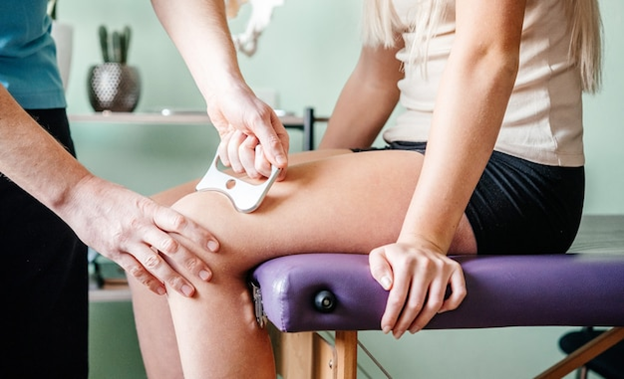Knee pain troubles lots of people, from kids to older adults. Many things cause this issue, like sports injuries or simple daily wear and tear. However, knee pain can be especially troublesome if it’s linked to arthritis. Arthritis affects millions around the world, often leading to a drop in quality of life. Identifying its signs early is vital for dealing with it.
Arthritis-related knee pain feels different because it keeps coming back. It often includes stiffness that hits in the morning or after long activity. Unlike short-lived pain from minor injury, arthritis pain sticks around and might even worsen. Common signal for arthritis includes constant swelling and warmth in the joint. When these signs appear, it’s smart to see a doctor.
This article helps explain the tests needed for spotting the cause of knee pain. Tests for knee pain can show if arthritis is present or not. Understanding these tests helps to handle discussions with doctors better. With this guide, those suffering can take action early if facing joint problems.
The Stakes: Why Accurate Diagnosis Is Crucial
Finding the real cause of knee pain helps doctors treat it correctly. With a clear diagnosis, they choose the right treatment plan immediately. Whether it’s arthritis or a ligament tear, every condition needs a different approach.

When people guess their knee pain issues and skip visiting doctors, it causes problems. Wrong assumptions make them miss out on timely care that they need. Dismissing pain as simple can let serious conditions progress further. Visiting a doctor ensures proper attention to your health concerns.
Identifying knee issues early can stop severe damage in its tracks. It means starting treatment without wasting precious time can greatly help. Early actions like exercising can keep individuals active longer. Catching arthritis early controls symptoms instead of letting it get worse.
Beyond Arthritis: Other Common Causes of Knee Pain
There are many reasons why your knee might start hurting. Injuries often cause sharp pain and make you feel unsteady. Gout happens when crystals build up in your joints, causing severe sudden pain. Bursitis occurs when sacs around your joints swell, making movement uncomfortable. Tendonitis develops from overusing a joint and hurts more with activity.
Arthritis pain is chronic and seems to get worse over time. Basic tasks like walking upstairs can become difficult due to knee issues. While gout or injuries happen fast, arthritis creeps in slowly. The knee might swell and feel stiff after rest or in the morning. Recognizing these symptoms helps you identify arthritis from other knee problems.
You’re at the Doctor’s: The Evaluation Process
When knee pain lingers, seeing a doctor helps find its reason. It starts with questions about the sort of pain you experience. They’ll ask about past injuries, other symptoms, and family history. A physical exam follows, checking for swelling and warmth in the knee. They look at your walk and balance to get a clearer picture.

During the exam, doctors watch closely for specific body signs. By feeling around the knee, they find painful areas. They check if there’s a warm spot because it can show inflammation. Your ability to move your knee easily gets tested too. They check how straight or bent your knee can get. Alignment tests help see if joints aren’t working right. Such methods help them figure out if it’s arthritis or something else.
Imaging Tests: Visualizing Your Joint Health
X-rays let doctors see inside your knees for signs of problems. They show if the space between joints is less, hinting at arthritis. X-rays are great to find bone spurs that grow near joints. These pictures help doctors understand how the joint structure is changing.
Doctors use MRI scans when they need a closer look inside your knee. MRI helps in seeing muscles and ligaments hidden from X-rays’ view. This is handy for spotting soft tissue injuries or detecting cartilage issues. With MRIs, doctors can better identify ligament tears or other damage.
Ultrasound provides live imaging which helps check soft tissue health. It captures muscle and tendon movement, even spotting swelling or fluid build-up. Doctors find it useful for diagnosing things like bursitis easily. Ultrasound helps doctors see how things move in real-time without cuts or pokes.
Sometimes CT scans are needed for exact images when bones are tricky. CT scans give cross-sections that help in understanding complex fractures. They’re used when other pictures can’t clearly show what’s wrong inside. Though not often used for arthritis, CT scans help unravel mixed signals.
Laboratory Insights: Blood Tests and Joint Fluid Analysis
Blood tests help tell the difference between types of arthritis. They find inflammation markers in the blood, like ESR or CRP, which point out inflammatory arthritis. Testing for unique antibodies aids in distinguishing rheumatoid arthritis from other forms. These tests offer understanding of patterns in blood tests for knee inflammation.
Joint fluid analysis through arthrocentesis collects synovial fluid from the knee. It examines this fluid to discover what causes joint inflammation. It helps tell inflammatory joints from non-inflammatory ones. High white blood cells suggest infection, while uric acid signals gout.
These tests for knee pain help doctors with diagnosis and treatment. They provide a complete view to accurate diagnosis and proper care plans. This information guides doctors and helps tailor solutions to individual needs.
Aligning Results: How Tests Aid Diagnosis
Relying on just one test never provides a full understanding of knee pain. Instead, using a mix of tests for knee pain, along with imaging, helps create a better picture. Bringing all the pieces together, healthcare providers understand more clearly what’s going on.
Taking a holistic approach includes looking at symptoms and physical check-ups. It also involves looking at imaging studies and using blood tests for knee inflammation for extra information. Every part of this process offers important information that can help give a correct diagnosis. This complete method means patients get good care that looks at everything, not just the problem areas.
Decoding the Diagnosis: Next Steps for Arthritis
Once you know you have arthritis, consider your treatment plan options carefully. Managing symptoms involves relieving pain, reducing inflammation, and ensuring joint movement is good. Various treatments like medicines and therapy aim to suit the type of arthritis you have. It is vital to keep leading an active lifestyle, despite your condition. This often means adapting daily habits to maintain mobility.
Sometimes, your regular doctor might suggest seeing an arthritis specialist. A rheumatologist knows a lot about joint problems and can offer better care advice when needed. They help when usual treatments don’t work or when your arthritis is tricky. This approach ensures you get the best-personalized plan for your particular situation.
When dealing with knee pain, some essential tests help determine the cause. It might involve checking for swelling through blood tests designed to detect inflammation levels.
Early Intervention: Stopping the Progression of Knee Pain
Addressing knee pain early can prevent it from getting worse. Early medical attention can stop the joint from deteriorating further. The treatment should not only address the symptoms you feel today. But it should also focus on reducing future joint damage risks.
One treatment option includes using anti-inflammatory medicine to help the knee. Other medicines like DMARDs work by slowing arthritis’s progress over time. Engaging in frequent, gentle exercises keeps your knee muscles strong. Strong muscles around the knee give better joint support with movement. Physical therapies also help by improving the flexibility of your knee. Blood tests for knee inflammation can also aid in monitoring pain sources. Tests for knee pain help decide which treatment is right for you.
Treatment Modalities: Non-Invasive and Surgical Options
Non-invasive treatments are often the first step in managing knee arthritis. This includes physical therapy, tailored exercise programs, and orthopedic aids like braces. A doctor might suggest lifestyle changes like weight management and diet adjustments too. These changes can reduce stress on the joints and boost overall health.
Surgical interventions come into play when symptoms don’t ease with non-invasive care. There are different surgeries, from the less invasive arthroscopy to knee replacement surgery. The goal is to ease pain, restore joint function, and improve life quality.
Selecting the Right Healthcare Providers in India
When choosing healthcare for arthritis here, ask for referrals and research. Pick hospitals known for treating arthritis with real expertise. Trust doctors who have experience in this area with good feedback.
Not all clinics have an equal setup for arthritis treatment. Choose places with solid diagnostic tools for clear results you can trust. Finding a center that knows the latest tests for knee pain is important for your care.
Lifestyle Adaptations: Managing Arthritis Day-to-Day
Living with arthritis means making tweaks to your everyday habits. Regular gentle workouts keep the joints flexible and the muscles engaged. Activities such as water-based exercises or light yoga reduce knee strain. Tweaking daily routines, like getting up regularly or using supportive chairs, makes life smoother.
Physical therapy is key in managing arthritis pain well. Carefully tailored exercise plans ease symptoms and improve movement. A physical therapist creates a program fitting your needs, ensuring safety and efficacy. Consistent evaluations adapt the routine to meet changing requirements.
SLP Diagnostics: Your Partner in Accurate Arthritis Diagnosis
SLP Diagnostics is a prominent name in arthritis testing in India. They provide essential tests for knee pain to guide patients accurately. Using state-of-the-art equipment, they offer blood tests for knee inflammation. This helps in pinpointing what type of arthritis one has.
Their facilities are top-notch and built to prioritize patient comfort. Patients receive clarity on their condition and helpful advice on managing symptoms. The patient-centered care at SLP Diagnostics makes navigating knees and health worries easier.


